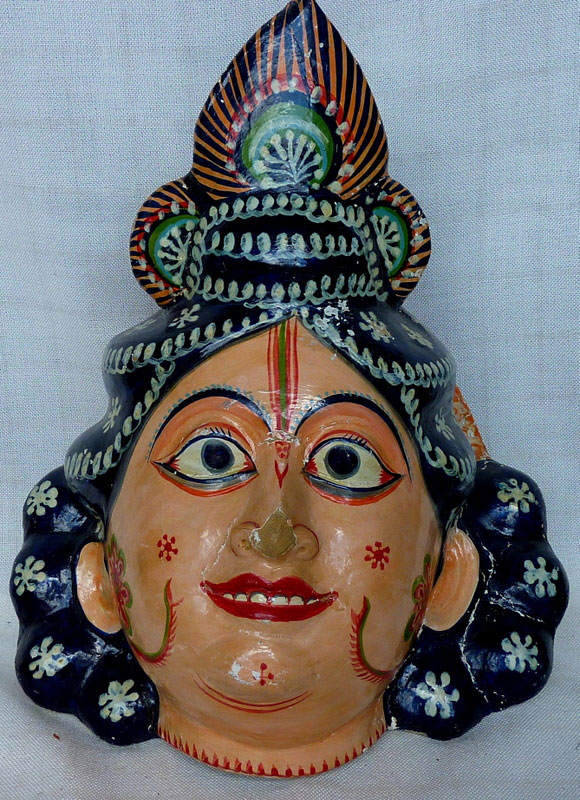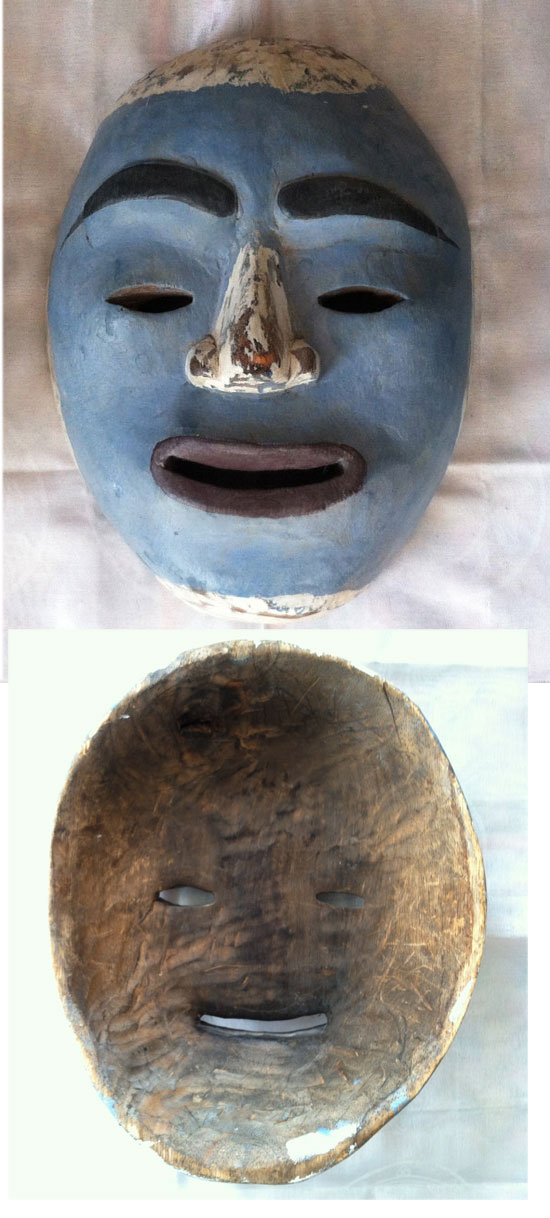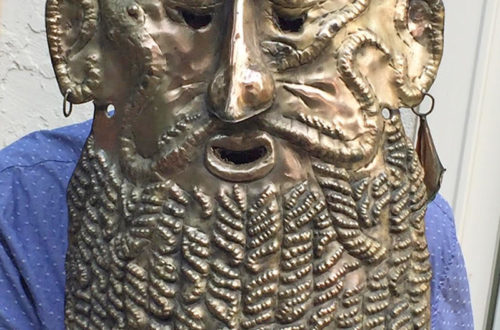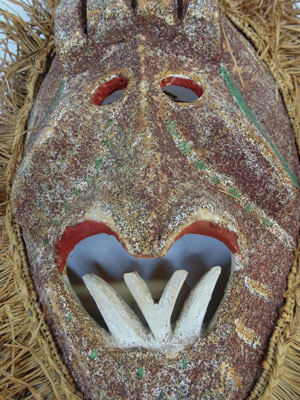 In case some of you don’t know Spanish, La Puta means whore. These characters often show up in Mexican dances and parades.
In case some of you don’t know Spanish, La Puta means whore. These characters often show up in Mexican dances and parades.
More from Aaron on his buying trip to Veracruz, Mexico: “Another guy, who wasn’t a mask maker but sold sweets in front of his house, had a truly amazing collection. As we passed by, I admired his collection, and he invited me into his tiny 2-room home. Classic Mexican hospitality. This guy had nothing, probably made $2000/year. I asked him if he was willing to sell any of them, and he said they belonged to his children and grandchildren, so no dice. I could have made him quite wealthy by Naolinco standards, but he put family before money. Classic Mexican values. He let me take a photo of it. What do you think, does this guy have a first-class collection or what?”
A: All of the masks are beautifully made. Some have been used and the others were made to be used, but were sold instead. 50 years ago a similar group of 17 masks from Noalinco would look different, 100 years ago even more different. Authentic masks, as well as other folk art, are always evolving. A





2 Comments
Chris
Indeed the señor’s collection has a lot of appeal. And I admire his reaction to Aaron’s request. He did not just put family at the first place, but also his culture and tradition. He could have easily sold one mask and make his children and grandchildren happy with something bought by all the money. He did not, but honoured his culture. This is remarkable and tells us collectors a lot. It is one thing to pick up a mask at some flea market or garage sale. It is another to go into some local village, take away a cultural artifact and leave money back there. No matter how much we will value the item back home and care for it – it is still a piece of authentic culture taken out of its world and it will probably never come back to there. In South America, I also witnessed poor people sell their history for a handful of dollars to traders just to be able to cover their daily expenses…..Some time ago I also witnessed an internet auction of a very valuable, rare old mask from a specific central Swiss area. A local collector bidder from there hoped very much the mask to return to its cultural area, to “come back home” – it did not, as a rich collector from somewhere else made a very high bid, unbeatable by “normal” people. So, given away is given away, mostly forever.
By the way, the strange two black masks on the wall with those ears…what’s that supposed to be? Bats maybe? Thanks for some clarification. Dear regards, Chris
Aaron
Chris may be right with respect to some very specific kinds of artifacts, but I don’t think his concern generally applies. The culture is the source of masks, and they can (and do) make more. That an artifact is old does not necessarily make it more culturally valuable. In fact, in many countries, including some in South America, people prefer to use newer and shinier masks to older and more plain ones. They are surprised a collector is willing to pay more for an old mask than a new one. I observed that in both Bolivia and the Dominican Republic, for example. Even those cultures that do happen to value older masks do not necessarily have the resources to preserve them from the elements, so they will not necessarily last forever in any case. The Swiss case may be an exception, but I doubt the Swiss are representative of a nation lacking the wealth to preserve its culture. In short, taking a mask home and leaving money in its stead doesn’t generally remove anything irreplaceable. That a specific object has sentimental value to someone might make it irreplaceable, but that has little to do with culture. A person can be sentimentally attached to a mass-produced toy from Walmart.
In answer to the question about the black and white mask, that is a “vampiro” (vampire), and it can either take the place of a diablo mask in the Danza de los Moros y Cristianos, or it can be worn by someone who is not playing a core character.
Kind regards,